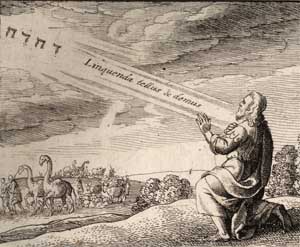|
by D.M. Murdock
Freethought Examiner
Archaeologists working in Turkey have unearthed an Assyrian tablet dating to around 670 BCE that,
What this fascinating discovery suggests, of course, is that the Bible tale of a divine pact does not represent "history" or a "factual" event, but is instead a fictional rewrite, borrowing or plagiarism of this older Assyrian treaty.
Over the centuries, many Bible critics, minimalists and mythicists have asserted that much of the Old Testament constitutes not factual history but a rehash of ancient myths and traditions dating to before the founding of the Jewish kingdom.
This new find apparently adds more
evidence to that theory, and it is quite refreshing that both the
scholars and the media are spelling out clearly this possible
"borrowing," without prejudice in favor of bibliolatry or upholding
improvable matters of faith.
Source
He was not necessarily saying the
Hebrews copied the Assyrian text, substituting their own story about
how God liberated them from slavery in Egypt on the condition
that they worship only him and follow his commandments.
The researchers hope to glean information about Assyria's imperial relations with the west during a critical period, the early 7th century BCE.
It marked the rise of the Phrygians and other rival powers in highland Anatolia - now modern-day Turkey - along the northwestern frontier of the Assyrian empire, and coincided with the divided monarchy of Biblical Israel...
Notable is the fact "it is widely accepted that the Hebrew Bible was being assembled around the same time as this treaty," i.e., during the 7th century BCE.
The case for this "late" dating of the
Old Testament's compilation - with a significant part of it also
written later, after the Jews' "Babylonian Exile" (597-538 BCE) -
has been made by Israeli archaeologists, including and especially
Israel Finkelstein in
The Bible Unearthed.
...it is nonetheless raising that very issue in a manner which breaks with the centuries-old tradition of bending all finds in the "Holy Land" and other places of biblical interest to fit the Bible, in attempts to prove the "Good Book" as "history."
It is obvious that this sort of
bibliolatry appeasement from the more scientific segment of society
is losing ground precisely because of such discoveries - and the
implication of this one is a doozy.
This discovery, therefore, would essentially negate the basic premise of the Old Testament:
Needless to say, for those of us who
have been stating as much for many years - and getting pilloried for
our efforts - this archaeological find is very exciting, as it adds
to the growing body of hard, scientific evidence that the Bible is
not "God's Word" but a manmade cultural artifact designed for
propagandistic purposes.
|

